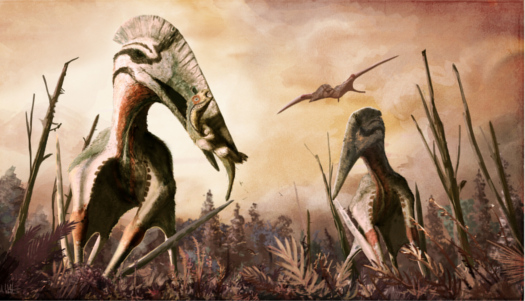- Series:Animals, Evolution’s Mistakes, Fossils, Transcript English
Psalm 8:8
“The fowl of the air, and the fish of the sea, and whatsoever passeth through the paths of the seas.”
 Every so often, as we like to report in these Creation Moments, evolutionists find that their own discoveries and their own presuppositions cause them to have to rewrite and rethink huge areas of evolutionary theory. One such area is the supposed evolutionary development of feathers.
Every so often, as we like to report in these Creation Moments, evolutionists find that their own discoveries and their own presuppositions cause them to have to rewrite and rethink huge areas of evolutionary theory. One such area is the supposed evolutionary development of feathers.
Feathers are marvelous examples of design. We have commented before about the impossibility of the evolution of feathers in birds. While recognizing some of the problems inherent in alleged feather development, evolutionists have simply pushed back feather development on to therapod dinosaurs, such as tyrannosaurus, supposedly 180 million years ago. Now, scientists at the University of Bristol, have investigated the little hairs, or pycnofibres, on pterosaurs, and determined that they think these are feathers. Previously, evolutionists had not thought that pterosaurs were related to therapods, so they now have to write a whole new section of evolution, based on the supposed origin of feathers, pushing back the evolutionary date for feathers to 250 million years ago.
There are so many issues to pick holes with here. Remember that the dating of these creatures relies on the dates of fossils, which are not, contrary to popular opinion, dated by any radiometric method, and certainly not by carbon dating. They are dated using circular reasoning where the dates of rocks and fossils are guesstimated from each other.
Creationists would not have any problem with finding out that creatures other than birds had feathers. We still point to the impossibility of the evolution of these marvelous objects.
Prayer: Your wonderful designs are clear for all to see throughout the whole of creation, Lord God and Creator, so that we are without excuse. Amen.
Author: Paul F. Taylor
Ref: University of Bristol. “New discovery pushes origin of feathers back by 70 million years.” ScienceDaily, 17 December 2018. <www.sciencedaily.com/releases/2018/12/181217125908.htm>. Image: Hatzegopteryx, CC BY-SA 4.0 International.
© 2019 Creation Moments All rights reserved.
